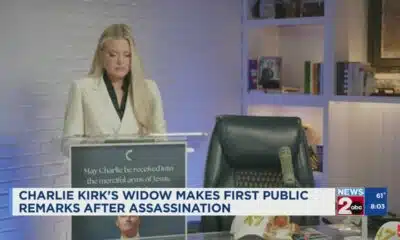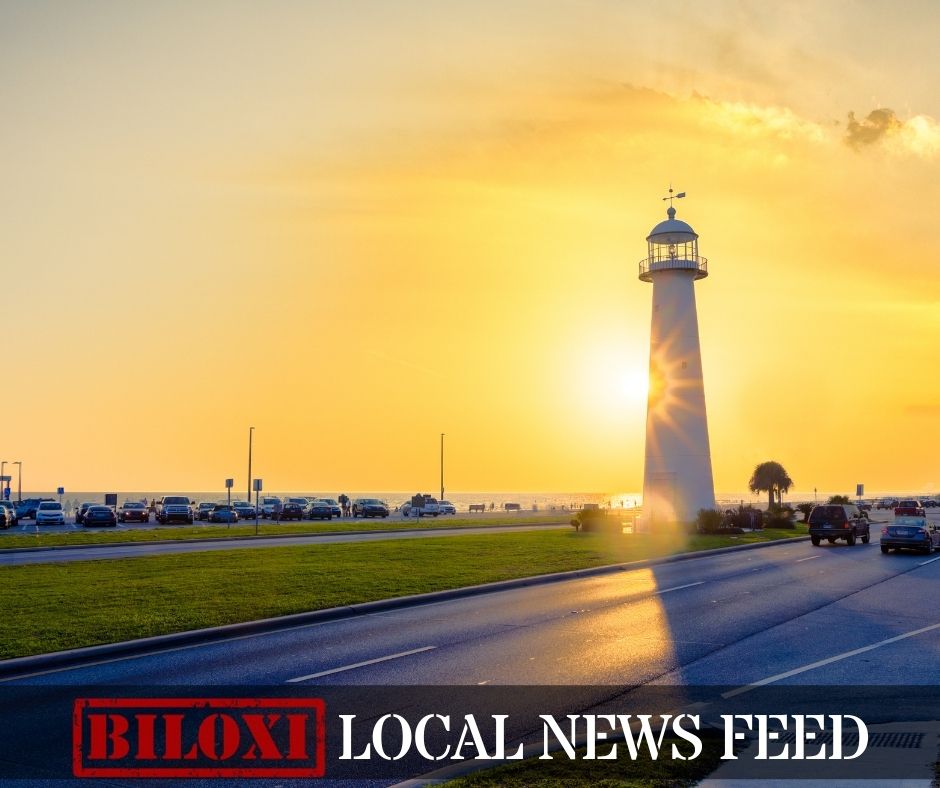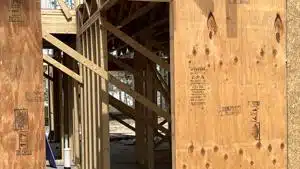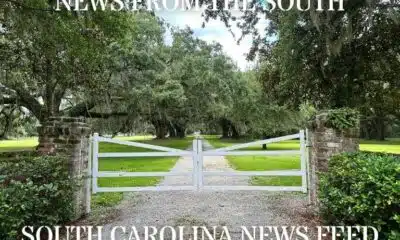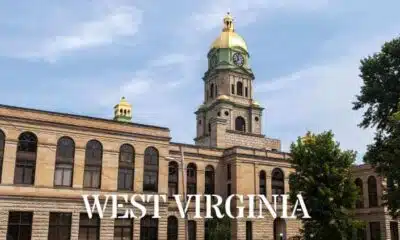News from the South - Kentucky News Feed
GOP cuts to food assistance would hit rural America especially hard
by Kevin Hardy, Kentucky Lantern
June 3, 2025
People in Marsha Keene’s community are already struggling to cover the basics.
Most of the clients Keene serves at the Susanna Wesley Family Learning Center in southeast Missouri are working but still rely on federal food assistance to keep up with ever-increasing costs.
The center provides a domestic violence shelter, parenting education and summer camps to struggling families stretched thin by living expenses. Keene, the center’s CEO, worries about how her clients can absorb significant cuts to food stamps, officially called the Supplemental Nutrition Assistance Program, or SNAP.
“I don’t see communities just being able to absorb that need,” she said. “I don’t know what the impact is going to be yet, but I cannot imagine that it’s going to be good.”
Billions in cuts to federal food assistance are looming as part of the One Big Beautiful Bill Act, a major tax and spending package that would slash federal spending on domestic programs to extend tax cuts passed during President Donald Trump’s first term. U.S. House Republicans passed the package in a 215-214 vote, and it’s now before the Senate.
Cuts to SNAP would affect residents of every state in all types of communities, but advocates fear the fallout could especially hit rural people, who are more dependent on food stamps, the largest anti-hunger program in the nation.
The legislation that passed the House would cut food assistance by an estimated $300 billion, according to the left-leaning Center on Budget and Policy Priorities. One key provision of the bill would expand work requirements to include people between 55 and 64 years old and those with children aged 7 or older. It would also tighten rules for counties with high unemployment rates.
Together, the changes would remove more than 3 million Americans from the program in an average month, reducing spending by more than $92 billion over 10 years, according to an analysis by the nonpartisan Congressional Budget Office.
The legislation will likely face changes in Senate negotiations. The measure was endorsed in a letter signed by 20 of the nation’s 27 Republican governors.
A greater share of rural residents currently rely on SNAP than those in metropolitan areas, according to the Food Research & Action Center, a nonprofit focusing on hunger and health among the impoverished. Rural hunger is already on the rise and grocery stores face an uphill battle to keep going in the most isolated parts of the country.
“The SNAP cuts are definitely going to make an impact because we already have hungry kids.”
‘I’d probably close the doors’
The National Grocers Association has opposed the potential cuts, saying SNAP provides not only critical food, but also meaningful boosts to local employment and economies. The organization, which represents retail and wholesale grocers, said cuts will particularly hurt independent and rural stores.
“Cutting SNAP would harm the most vulnerable Americans and threaten the viability of community grocery stores that are depended upon by their local economies and neighborhoods,” the association said in a May statement.
Facing competitive pressures from online retailers and big-box stores with lower prices, rural grocery stores are already struggling to remain viable.
But deep cuts to SNAP would have an uneven impact on rural stores.
For Kay Voss, the cuts would be catastrophic at her Stratton Country Market in southwest Nebraska. She estimates 40% of sales are paid for with SNAP.
“I’d probably close the doors,” she said.
That’s a possibility with or without federal changes: Struggling to turn a profit in the town of about 340 people, Voss said the market likely won’t last much longer.
“There’s nothing to be made on the grocery side,” she said.
Several grocery store operators interviewed by Stateline were more optimistic. Some said they believed locals were using their federal benefits at chains in nearby cities for cheaper prices or anonymity.
Tasha Malay, one of the owners of Malay’s Market in western Kansas, said SNAP made up less than 2% of the store’s sales last year.
While she believes cuts to the federal program are “a terrible idea” broadly, she said it won’t make a huge difference for her store.
“I think the people that qualify are utilizing it, but I think that they’re spending the dollars elsewhere,” she said.
Profit margins are famously slight in the grocery industry, especially for rural stores facing an onslaught of competition from dollar stores whose bulk purchasing allows them to offer much lower prices.
“When they’re operating on such thin margins anyways, that could have a huge impact on whether or not the store can remain open,” said Carlie Jonas, a policy associate at the nonprofit Center for Rural Affairs.
The center has worked with lawmakers to preserve rural grocery stores, which provide locals with social connections in addition to fresh meat and produce. Proposed legislation to fund $2 million in rural grocery assistance did not win approval from the Nebraska legislature because of the state’s challenging budget cycle, Jonas said.
That figure, though, pales in comparison to new costs Nebraska could face if the proposed SNAP changes are enacted.
One component of the federal legislation would shift billions of costs from the federal government to states to administer SNAP.
A Nebraska-based think tank estimates the state would have to spend at least $39 million a year to make up for the lost federal funds.
“Every single state is going to have to make some really difficult decisions,” Jonas said.
In Wisconsin, state officials estimate the changes would cost the state $314 million per year.
“This is over a quarter billion dollars each year that Wisconsin couldn’t use for our health care, our roads, our schools, or our economy,” Wisconsin Medicaid Director Bill Hanna said in a May statement.
U.S. House Speaker Mike Johnson, a Louisiana Republican, downplayed the impacts of the changes.
“We are not cutting SNAP,” he said May 25 on CBS News’ political show “Face the Nation.” “We’re working in the elements of fraud, waste and abuse. SNAP for example, listen to the statistics, in 2024, over $11 billion in SNAP payments were erroneous.”
A PolitiFact breakdown published May 29 disputed Johnson’s remarks, concluding that three independent analyses show millions of people could lose SNAP benefits.
‘It’s time to sound the alarm’
Food insecurity is already on the rise in rural America.
Even in heartland areas where farming is central to the local economy, many have trouble accessing fresh and affordable food.
“We’re seeing food insecurity across the entire state rise, but really disproportionately in our more rural areas,” said Tim Williams, government affairs and advocacy officer at Food Bank for the Heartland, an Omaha, Neb.-based nonprofit serving 93 counties across Nebraska and Iowa.
Williams said cuts to the SNAP program will drive up demand on food banks, especially in rural areas that have long struggled with access and transportation to secure fresh foods. In sparsely populated areas such as western Nebraska, it’s difficult to get to grocery stores — if they exist at all.
“There are counties in the state where there are more cows than people, and so things are very spread out,” he said. “They can be very difficult to get to. Sometimes there’s only one pantry or one grocery store in a county.”
The federal food program works in tandem with food banks to keep people from going hungry, Williams said. And cuts to federal aid will unquestionably affect nonprofits.
“It will put a disproportionate burden on the charitable food system that they can’t sustain because they’re already seeing too many people,” he said.
Susie Boelter, executive director of the North Country Food Bank, said it’s time to expand food assistance — not cut it. She told the North Dakota Monitor her nonprofit has experienced “staggering increases” in need over the past three years.
For every meal the food bank provides across its 21-county service area in North Dakota, SNAP provides nine, she said.
“Any additional cuts will put a ton of pressure on our emergency food system,” Boelter said. “Food banks are good at getting food into the hands of people who need it, but it’s time to sound the alarm.”
Stateline is part of States Newsroom, a nonprofit news network supported by grants and a coalition of donors as a 501c(3) public charity. Stateline maintains editorial independence. Contact Editor Scott S. Greenberger for questions: info@stateline.org.
Kentucky Lantern is part of States Newsroom, a nonprofit news network supported by grants and a coalition of donors as a 501c(3) public charity. Kentucky Lantern maintains editorial independence. Contact Editor Jamie Lucke for questions: info@kentuckylantern.com.
The post GOP cuts to food assistance would hit rural America especially hard appeared first on kentuckylantern.com
Note: The following A.I. based commentary is not part of the original article, reproduced above, but is offered in the hopes that it will promote greater media literacy and critical thinking, by making any potential bias more visible to the reader –Staff Editor.
Political Bias Rating: Left-Leaning
This article presents a perspective that highlights concerns about proposed federal cuts to food assistance programs like SNAP, emphasizing the potential negative impacts on vulnerable rural communities and low-income families. It critiques the Republican-led legislation and voices worry from nonprofits, grocery associations, and policy advocates, aligning with a viewpoint that supports maintaining or increasing social welfare support. While it provides factual information and includes Republican responses, the overall framing is sympathetic to the challenges faced due to the cuts, which is characteristic of a left-leaning approach to social safety net issues.
News from the South - Kentucky News Feed
Few showers possible Saturday night into Sunday
SUMMARY: Meteorologist Eric Zernich reports mostly dry, pleasant fall weather with clear skies and temperatures dipping into the 50s and 60s overnight. Most of the weekend stays dry, though a weak upper-level disturbance may bring a slight chance of showers late Saturday into Sunday morning, mainly in southern Indiana, but rain will likely fizzle due to dry conditions. Sunday will be warmer, reaching near 90°F, continuing into next week with summer-like heat in the 90s. Events like Bourbon and Beyond and the Gaslight Festival will enjoy mostly sunny skies, but attendees should stay hydrated as warm temperatures persist.
WLKY meteorologist Eric Zernich’s Friday night forecast
WLKY is your home for Kentucky breaking news and weather. For your latest Kentucky news and weather visit: https://www.wlky.com/
For licensing inquiries: https://www.wlky.com/licensing
News from the South - Kentucky News Feed
Trump says he’ll send National Guard to Memphis, escalating his use of troops in US cities
SUMMARY: President Donald Trump announced plans to deploy the National Guard to Memphis, Tennessee, to address crime concerns, claiming local officials support the move. Tennessee Governor Bill Lee welcomed the plan, while Memphis Mayor Paul Young opposed it, emphasizing community-focused solutions like rehabilitation and job support over military presence. Despite overall crime reductions and ongoing FBI operations, persistent gun violence and high-profile killings fuel concerns. Legal experts warn deploying troops for policing risks civil rights violations. Trump’s broader strategy involves sending troops to other Democratic-led cities, sparking political and legal debates over the use of military forces in domestic law enforcement.
The post Trump says he’ll send National Guard to Memphis, escalating his use of troops in US cities appeared first on www.wnky.com
News from the South - Kentucky News Feed
Suspect in Charlie Kirk assassination expressed opposition to conservative activist’s views
SUMMARY: Charlie Kirk, conservative activist and co-founder of Turning Point USA, was assassinated by 22-year-old Tyler Robinson in Utah. Robinson, who opposed Kirk’s views, was arrested after confessing to family and sharing incriminating messages and bullet engravings linked to the shooting. The politically motivated attack occurred during a live event at Utah Valley University, shocking attendees and sparking broad condemnation. Kirk was influential in rallying young Republicans and had close ties to Donald Trump, who announced plans to award him the Presidential Medal of Freedom. The incident highlights growing political violence in the U.S. and calls for unity over division. The investigation continues.
The post Suspect in Charlie Kirk assassination expressed opposition to conservative activist’s views appeared first on www.wnky.com
-
News from the South - North Carolina News Feed7 days ago
Reagan era credit pumps billions into North Carolina housing | North Carolina
-
News from the South - Alabama News Feed7 days ago
Amid opposition to Blount County medical waste facility, a mysterious Facebook page weighs in
-
News from the South - South Carolina News Feed7 days ago
South Carolina’s Tess Ferm Wins Miss America’s Teen 2026
-
News from the South - Kentucky News Feed7 days ago
3 states push to put the Ten Commandments back in school – banking on new guidance at the Supreme Court
-
Local News7 days ago
Duke University pilot project examining pros and cons of using artificial intelligence in college
-
News from the South - West Virginia News Feed6 days ago
Protesters in D.C. flood the streets demanding an end to Trump’s military deployment
-
News from the South - Missouri News Feed6 days ago
1587 Prime gives first look at food, cocktail menu ahead of grand opening in KC
-
News from the South - Virginia News Feed6 days ago
On the record: Winsome Earle-Sears













